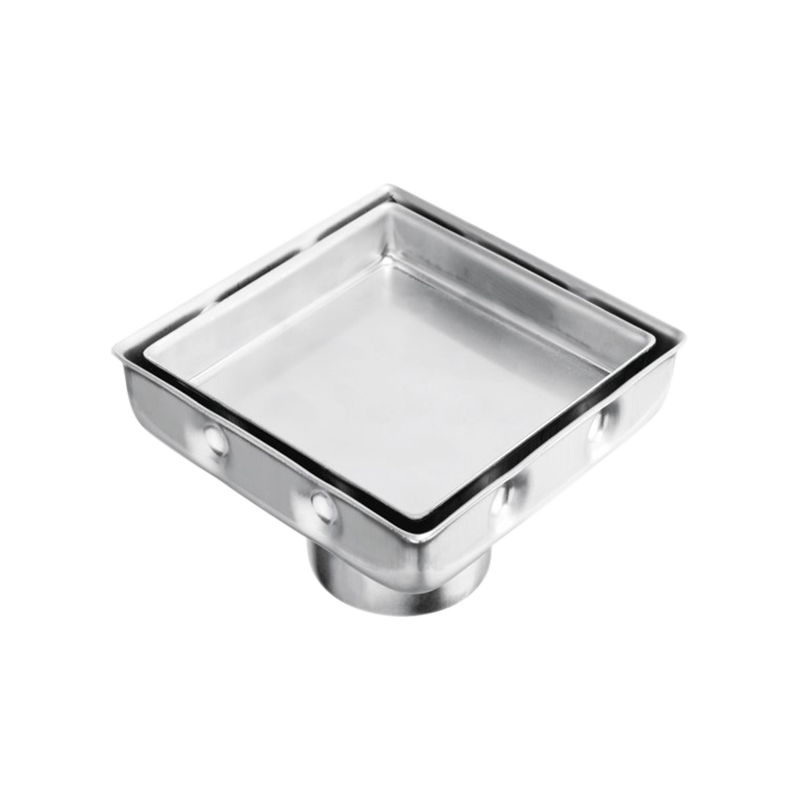Stainless Steel Tile Drain and Scaling Issues
Stainless Steel Tile Drain systems are widely used in both residential and commercial applications due to their durability, corrosion resistance, and ability to efficiently manage surface and subsurface water. However, like any drainage system, they can face challenges related to scaling and sediment accumulation. Understanding the factors that contribute to scale formation and debris buildup is essential to maintain suitable drainage performance and prolong the lifespan of the system.

Material Properties and Their Influence on Scaling
- Stainless steel offers good corrosion resistance, reducing the likelihood of chemical reactions that could accelerate deposit formation.
- Smooth surface finishes on stainless steel drains reduce adhesion sites for minerals and debris, lowering the risk of accumulation.
- The grade and composition of stainless steel affect its interaction with water chemistry, with higher grades typically providing good resistance to scaling.
Water Quality Factors
- Hard water containing high concentrations of calcium, magnesium, and other minerals is a primary contributor to scale formation.
- Alkaline or acidic water can also impact the deposition rate of mineral layers on drain surfaces.
- Suspended solids, organic matter, and particulate debris in water may adhere to the drain surface, promoting sludge or sediment buildup over time.
Design Features to Reduce Accumulation
- Proper slope and gradient ensure continuous water flow, preventing stagnant zones where deposits are more likely to form.
- Perforation size and pattern influence water velocity and self-cleaning capabilities, with narrower, well-distributed slots reducing debris retention.
- Drain channels designed with rounded corners and smooth transitions reduce turbulence and areas where sediment can accumulate.
Installation Practices and Their Role
- Ensuring correct alignment and slope during installation is critical to avoid low spots where water and debris can stagnate.
- Proper sealing at joints prevents leakage that may promote localized mineral deposition or microbial growth.
- Avoiding excessive overhangs or poorly supported sections reduces the chance of water pooling, which can accelerate scaling.
Maintenance Strategies to Prevent Scaling
- Regular inspection and cleaning remove accumulated sediment before it hardens into scale.
- Flushing the drain with clean water can help dislodge minor deposits and maintain smooth flow.
- Mechanical cleaning tools or mild chemical descaling agents may be employed periodically for drains in areas with particularly hard water.
- Preventive measures, such as water softeners or sediment filters upstream, reduce the mineral load entering the system.
Environmental and Operational Considerations
- High rainfall regions or areas with frequent surface runoff may introduce more debris, increasing the risk of clogging and scale formation.
- Temperature variations can affect water chemistry and deposition rates, with warm water promoting faster mineral precipitation.
- Routine monitoring during peak water flow periods helps identify early accumulation, allowing for timely intervention.
Maintaining Efficient and Clean Drainage
Stainless Steel Tile Drain systems are generally resistant to corrosion and deposits, but scaling and sediment accumulation can still occur, especially in areas with hard water or high particulate content. By considering material selection, proper installation, optimized design, and regular maintenance, the risk of accumulation can be reduced. Proactive inspection and cleaning, combined with water treatment strategies when necessary, ensure the drains continue to operate efficiently, providing long-term reliability and effective water management. Proper attention to these factors allows Stainless Steel Tile Drains to maintain clean, unobstructed channels and deliver consistent drainage performance over time.
